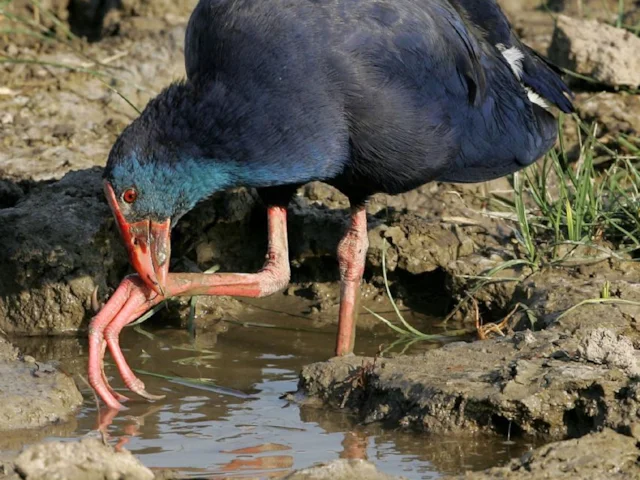Purple Swamphen is a widely dispersed ‘supertramp’ species which has colonised most of the Old World’s wetlands from Spain through to New Zealand.
African Swamphen Porphyrio madagascariensis is already split by some, but other subspecies have long been touted as potential full species. A large, just-published analysis of the whole genus using up to four mitochondrial and two nuclear genes has revealed the relationships and colonisation history of Porphyrio across the world, incorporating all recognised taxa.
There are up to 14 Purple Swamphen P porphyrio subspecies currently accepted, falling into groups defined by variations in the colour of the head and scapular feathers. All were included in the analysis, which confirmed the taxonomic level of existing species and revealed six separate branches or clades of Purple Swamphen which may be of species level: nominate porphyrio (Iberia and North Africa); P madagascariensis; P indicus (Indonesia); P pulverulentus (Philippines); P poliocephalus (Turkey to India and South-East Asia); and P melanotus (Australasia to Samoa).
Reference
Garcia-Ramirez, J C, and Trewick, S A. 2015. Dispersal and speciation in purple swamphens (Rallidae: Porphyrio). The Auk 132: 140-155.
Out of the swamp
84b1e649-7b7d-4179-8813-1bc4753261be


